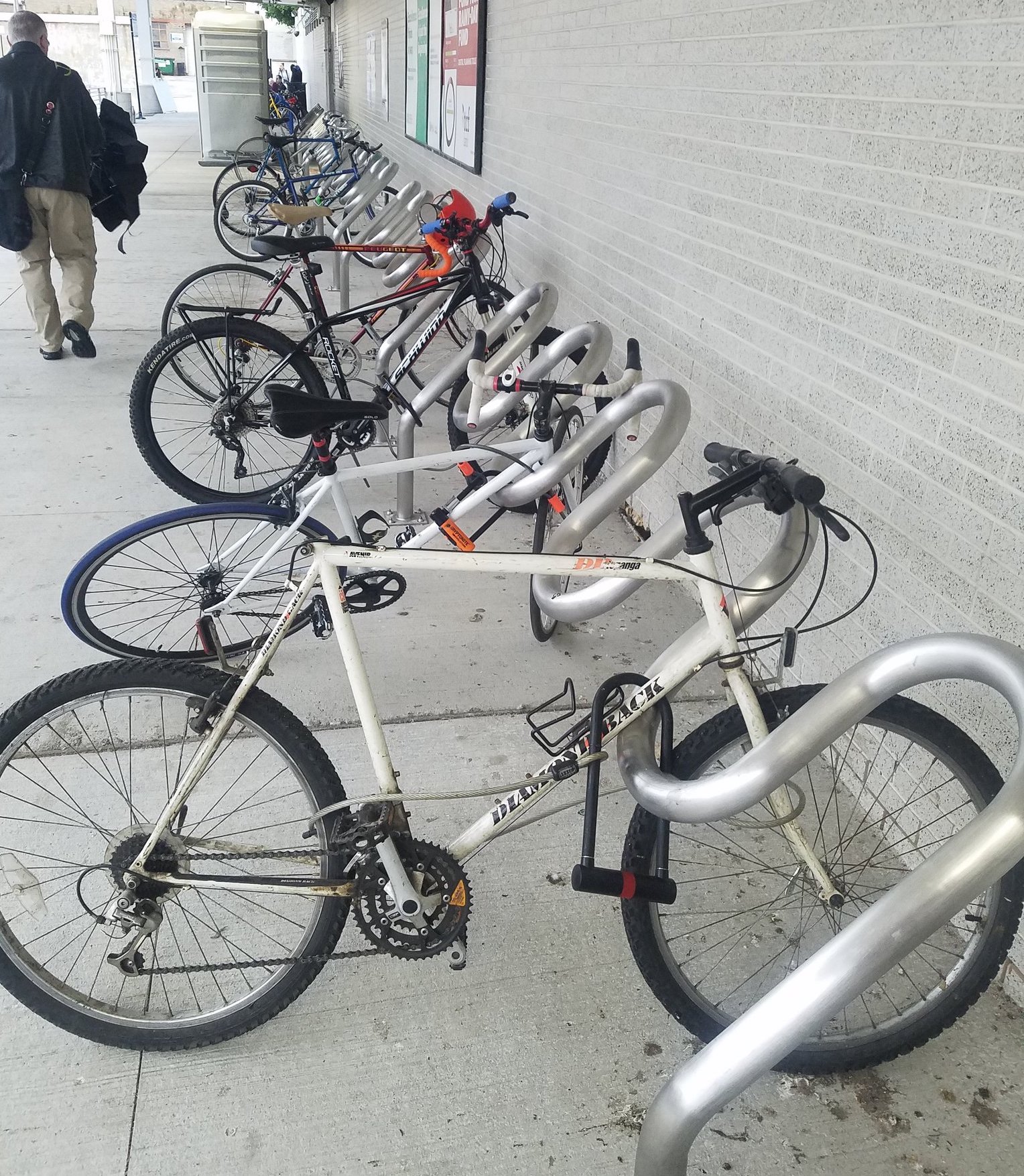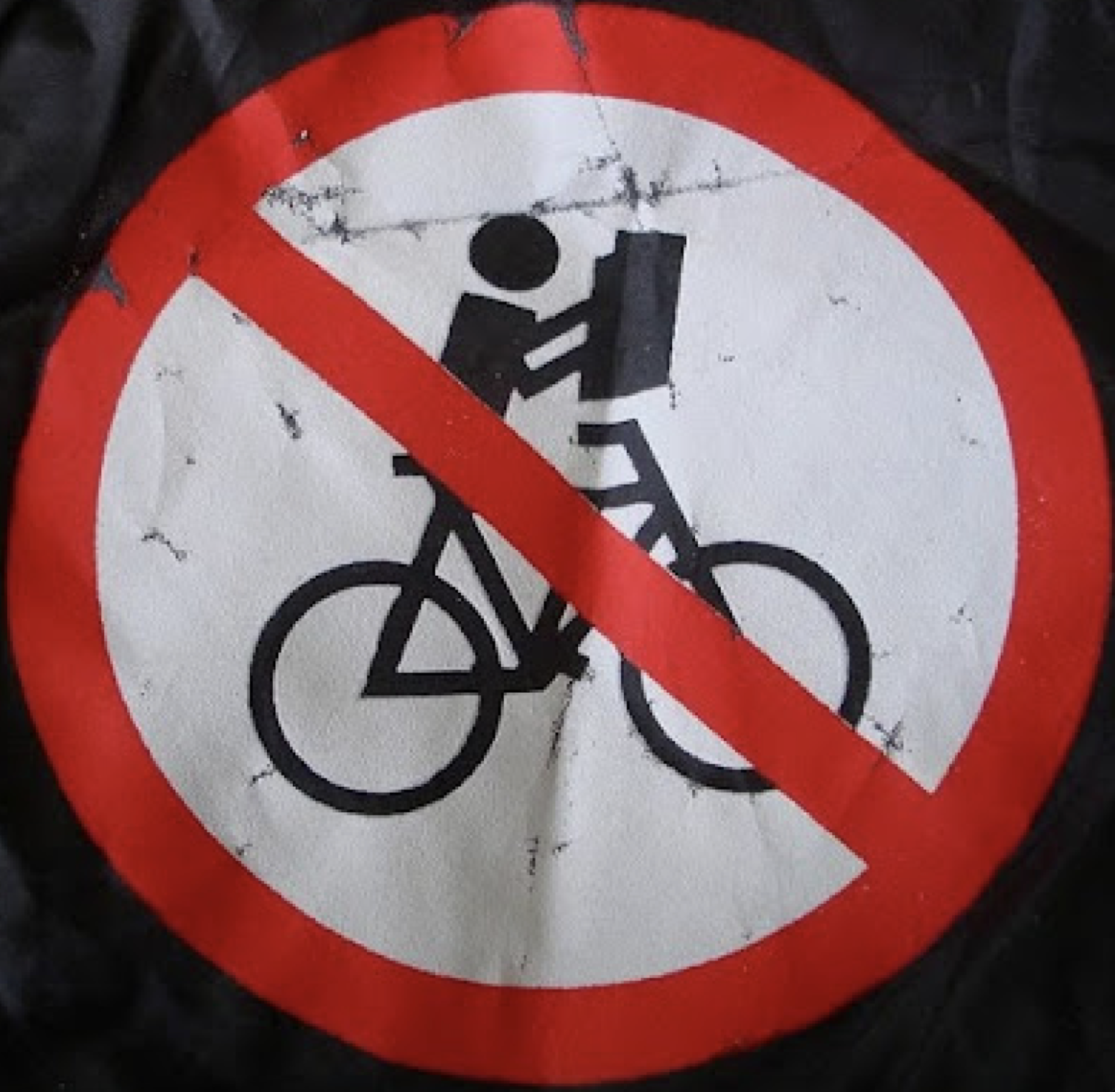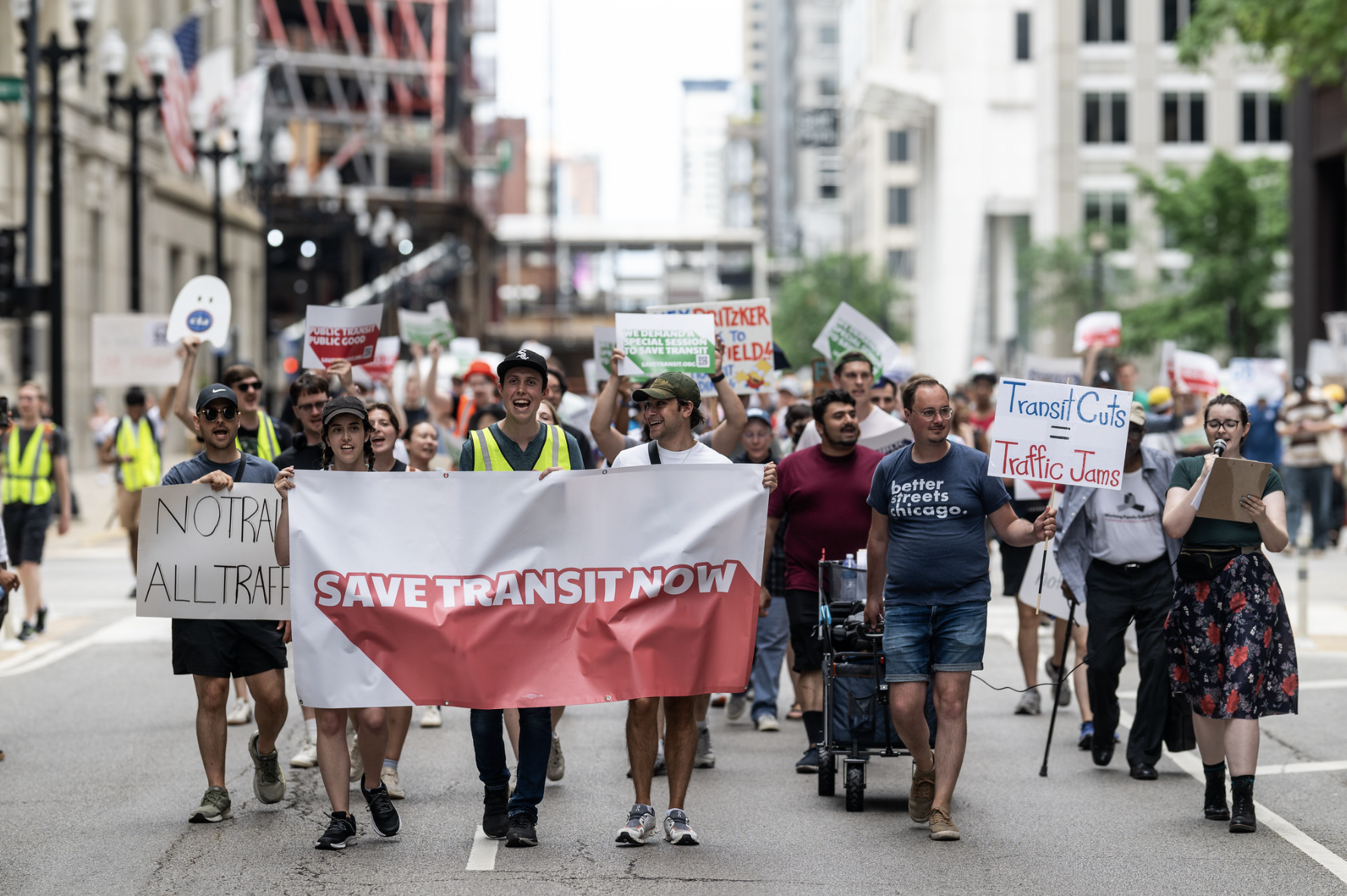I hate to get all "Back in my day" with you folks, but in the early 2000s, when I worked at the Chicago Department of Transportation's bicycle program overseeing the installation of bike racks, there was a very cooperative, productive relationship between CDOT and the CTA when it came to planning bike parking at stations. I can't take all the credit for it, because other CDOT and staffers were involved (shout-out to former CDOT bike program staffers Eric Anderson and Trisha Dinh, and ex-CTA planner Amy Malick) and I was fairly new at the job, but early on I helped get bike racks installed inside of dozens of 'L' stops.
Obviously, getting the parked bikes out of the rain and snow was beneficial. And for extra security, whenever possible, we would locate the fixtures within sight of the customer assistant's booth and/or inside the turnstiles in the "paid" area, where casual bike thieves wouldn't have access to them.
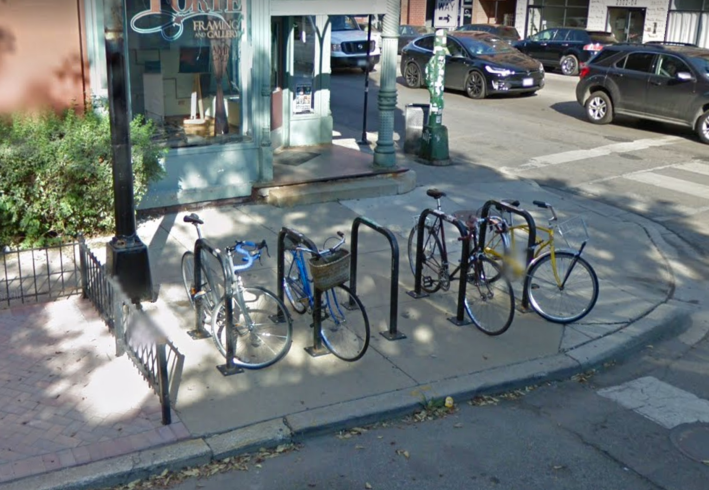
In most cases we used the same tried-and-true "inverted U" rack design that CDOT is still installing on sidewalks today. They're nothing fancy, but they do a good job of keeping bikes upright, hold two cycles comfortably (you can cram more on there if you need to), and work with just about every kind of lock. In some cases we used the more controversial "wave" rack design, using a model with wide humps that provide enough space to park the intended number of bikes. The controversial part is due to the fact that when people park broadside to the rack, it cuts the capacity. But this installation outside the Millennium Park bike station (one of my proudest achievements as bike parking manager) gets great use during concerts.
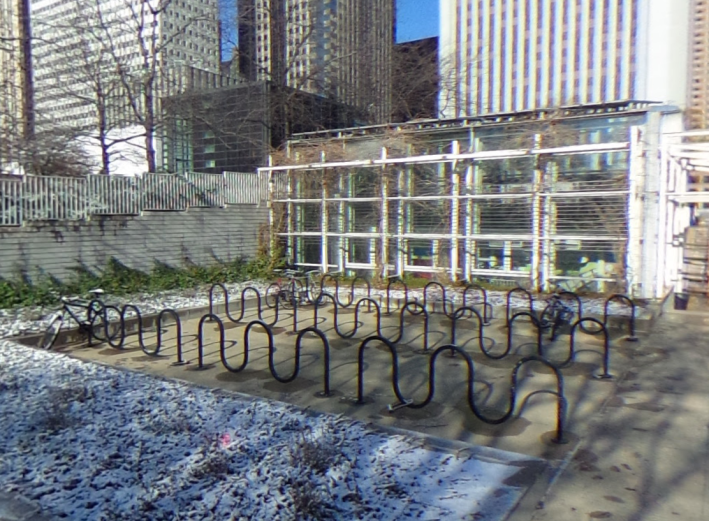
More ambitiously, we got high-capacity, sheltered, European-style double-decker bikes racks installed at several stations, including 95th Street, Midway, Sox-35th, Damen in Wicker Park, and the Jefferson Park transit center. We spent plenty of time researching best practices, and I think we chose a good design that was sturdy and fairly secure, with a stout locking bar that made it possible to lock a wheel and the frame to the rack with a U-lock.
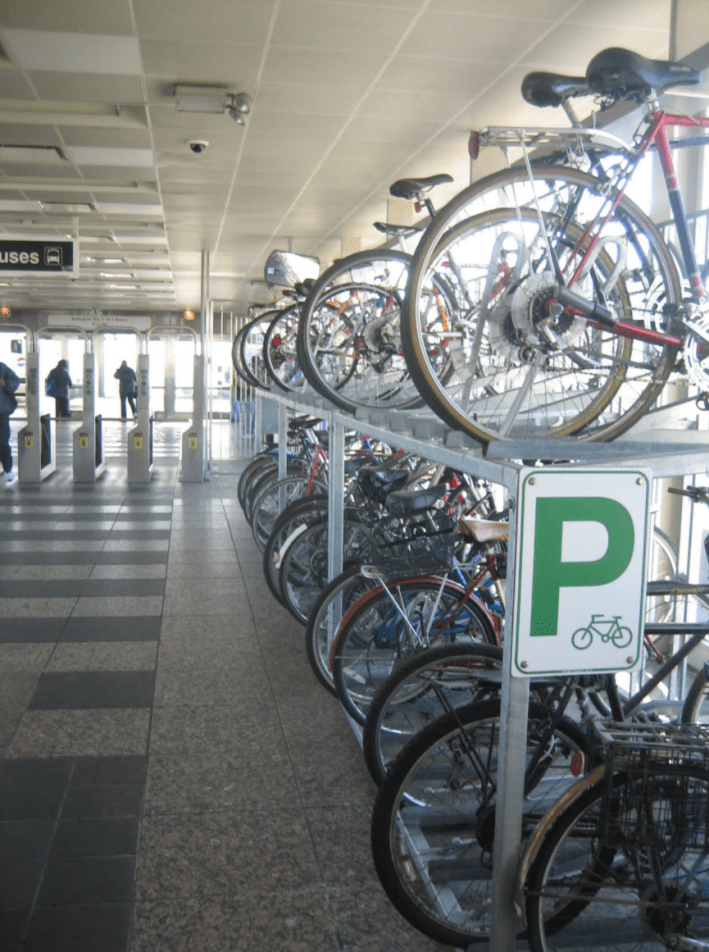
The main downside of the racks was that the second level wasn't very accessible to smaller people. Unlike the double-decker racks inside the Millennium Park bike station, the upper racks didn't pull out and down for easy loading with a spring assist, because the CTA was wary of including moving parts for maintenance reasons. Still most of the installations have proved popular with commuters. (The Wicker Park indoor racks don't get much use because the station is relatively close to the Loop -- many people choose to bike downtown from the neighborhood rather than doing a bike-and-ride commute -- and they're located up a flight of stairs.)
In retrospect, that was the the golden age of Chicago transit station bike parking. Granted, only hardcore bike parking geeks like myself, keep track of such things. But in recent years it appears that there has been relatively little communication between the CTA and CDOT bike program staffers -- largely folks who ride bicycles and know what good bike parking is. That negatively affects everyone who bikes to transit stations, not just rack dorks like myself.
Maybe there are some exceptions to the rule, but in general, recent CTA bike parking installations have been garbage. The main problem is that, instead of sticking with time-tested rack designs that are popular with cyclists, the CTA planners have prioritized form, or perhaps cost-savings, over function. (Know of any exceptions to this rule that I'm overlooking? Let us know in the comments.)
My hatred for the racks at the new Wilson station in Uptown, my local stop, is well documented. These fixtures look sleek, but they're really only designed to hold one bike each, and they don't allow for locking the bike frame and a wheel with the lighter-weight, more secure (less room for thieves' tools) mini U-locks favored by many urban cyclists. Moreover, they're only attached to the concrete with two bolts, so probably wouldn't be that hard to pry, or even Bruce Lee kick, them out of the ground. Annoyingly, these subpar outdoor racks replaced indoor inverted U racks at the old station.
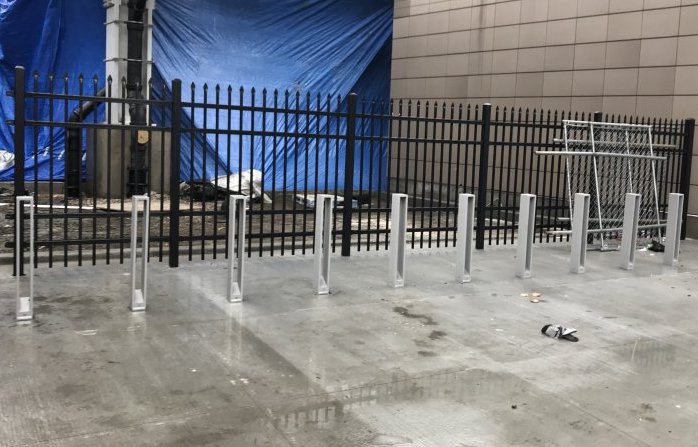
A similar rack design was used for the mostly-show, not-a-whole-lot-of-go $17 million reconstruction of the Belmont Blue Line station. These replaced half a dozen sheltered inverted Us. In fairness, one lonely inverted U was reinstalled at the corner.
Current Belmont Blue Line station outdoor bike rack situation pic.twitter.com/61Lkoynp73
— ʎןıɯƎ (@allweeksend) April 16, 2019
The stainless steel racks at the recently opened Cermak Green Line stop may look nice. But bikes locked to them tend to fall over because the racks don't do a good job of supporting the bikes.
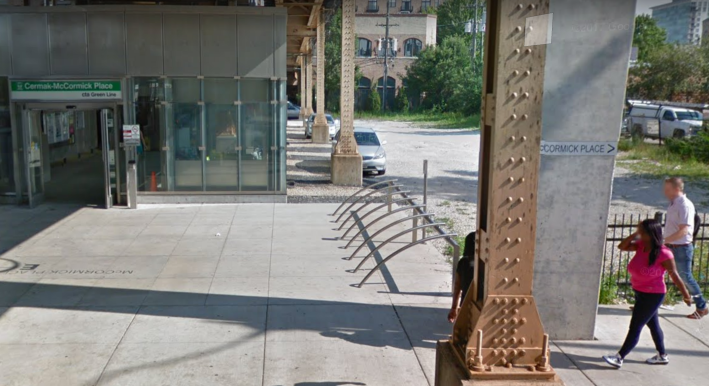
These beauties below were selected for the Morgan station a few years ago by some CTA planner who apparently wanted to make an architectural statement, but doesn't actually bike to train stations.
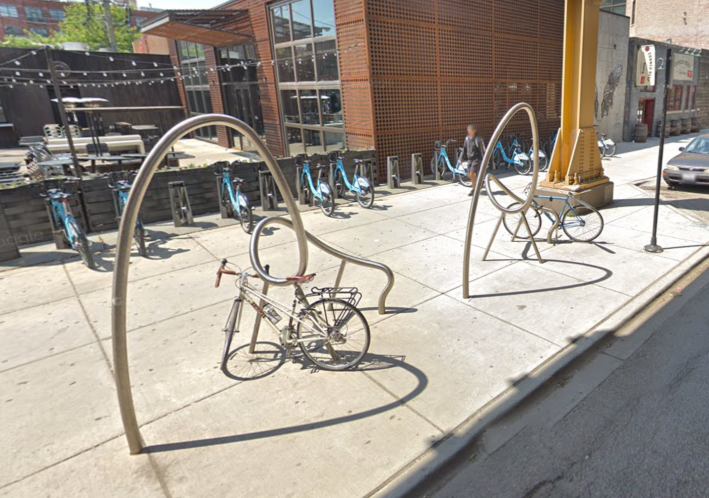
What's especially infuriating is when a great bike parking installation is replaced with a mediocre one. That's what happened at the 95th Street Red Line station. The installation we planned there connected all the dots: It was sheltered, in the paid area, with lots of capacity, and it was even within view of a small office for police officers (the window in the background of the photo below.)

When the station was recently rebuilt, these racks were apparently trashed (hopefully a scrapper made some money off of them.) The fixtures that replaced them are functional inverted Us. But according to a South Side bike advocate who sometimes bikes to the station and rides the train downtown, most of the new racks are located outside of the station in the bus stop area. "That sucks!"
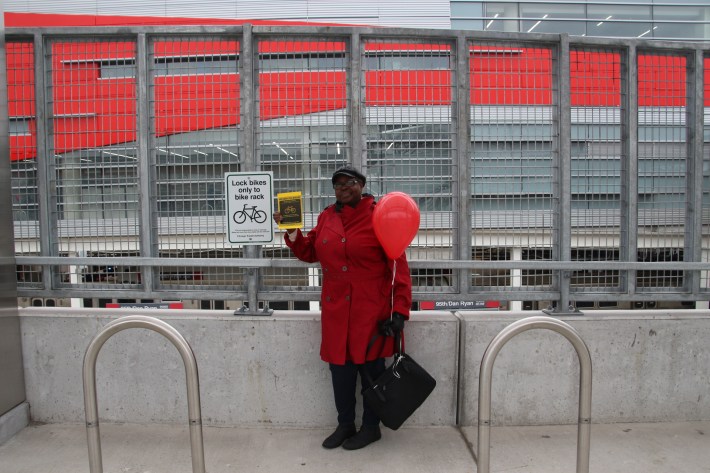
Any just last week I heard that the CTA had dismantled another one of our double-decker rack installations at Jefferson Park and isn't bringing it back. These racks were located outside of the station, but they were sheltered from the elements by an awning and weather screeens and got great use from dozens of bike riders a day.
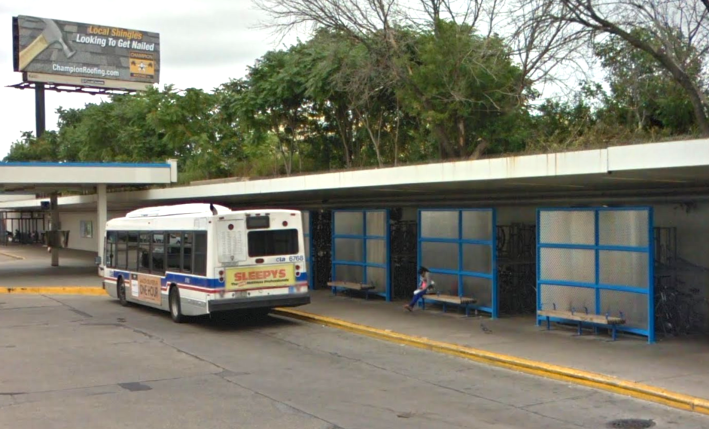
"We will not re-install the sheltered, double-decker bike racks," the CTA said in a statement. "It was determined that the double-decker bike racks were a maintenance and security issue. However, once the project is complete and bike racks with a different design are installed, we will offer the same number of bike rack spots - approximately 120 - as there were prior to the start of the project."
If the weather screens caused maintenance and security issues (perhaps people urinated behind them -- any insight on this Jeff Parkers?), the CTA could have simply reinstalled the racks without the screens. Instead, the agency is replacing them with wave racks. That would be OK, except that they chose waves with narrow humps that will make it difficult to actually squeeze in 120 bicycles. Worse, the racks feature a weird bend in them that serves no purpose but aesthetics, and makes it more difficult to park.
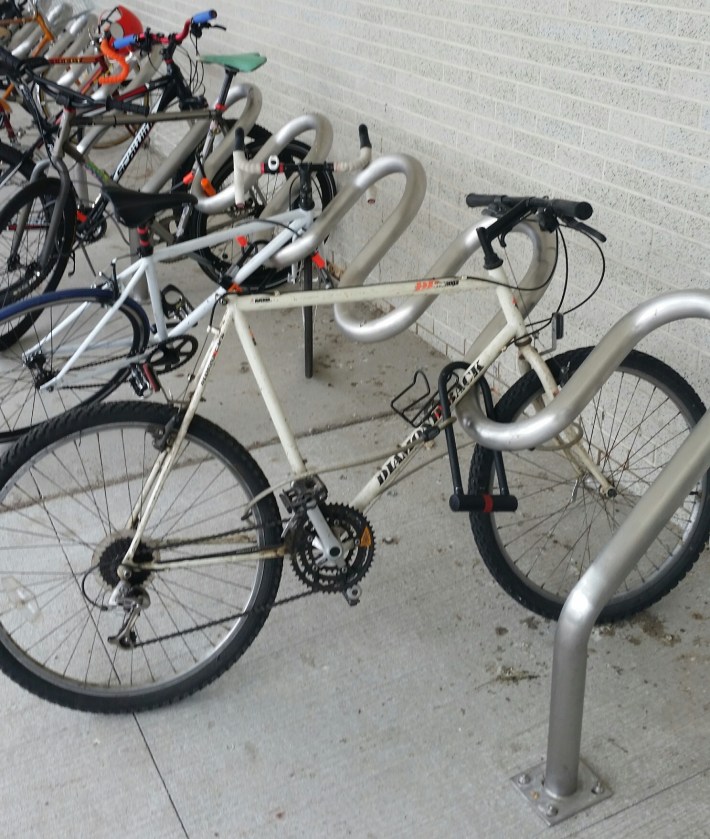
Yes, this issue is personal for me, since I helped create some of the high-quality bike parking installations that the CTA has destroyed. But the moral of the story that many of these wrongheaded design choices could have been avoided if the transit agency had collaborated with the actual bike planners over at CDOT. Please start working together again! (End rant.)
